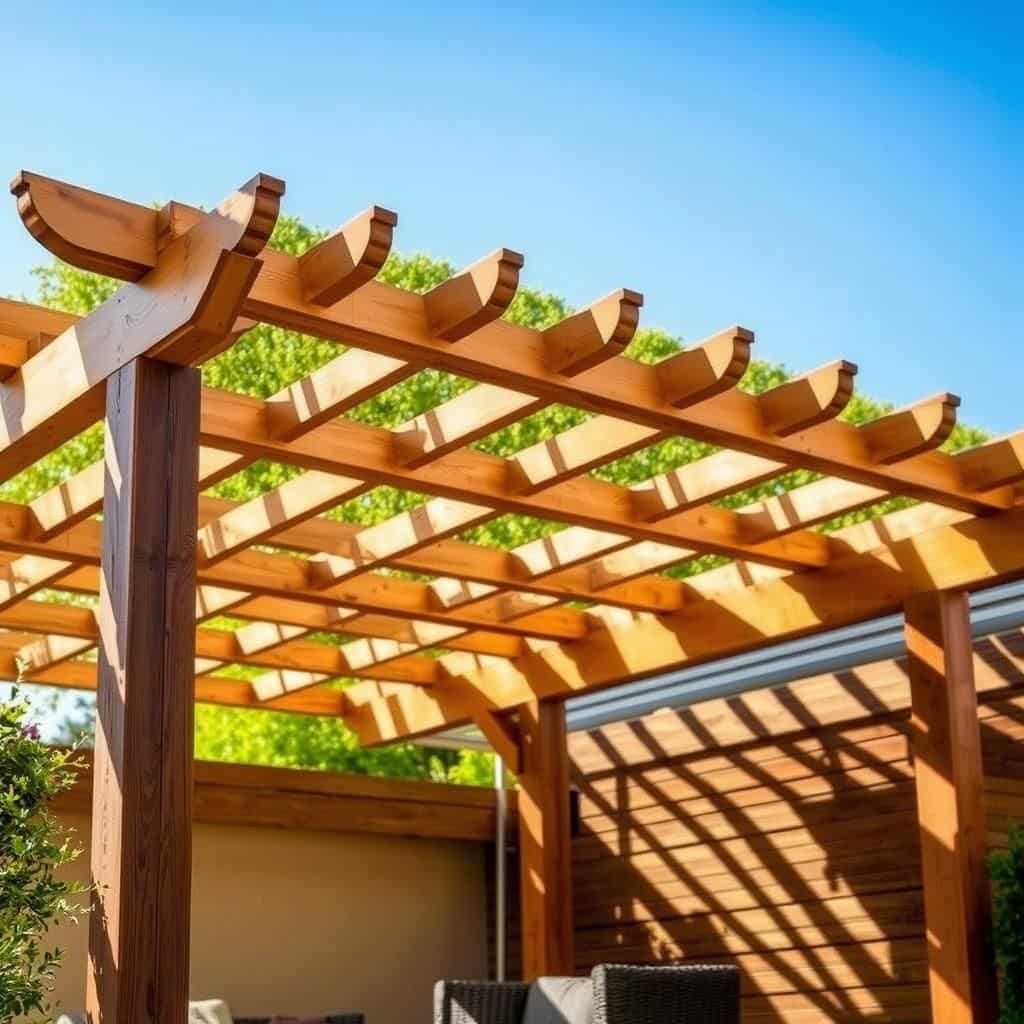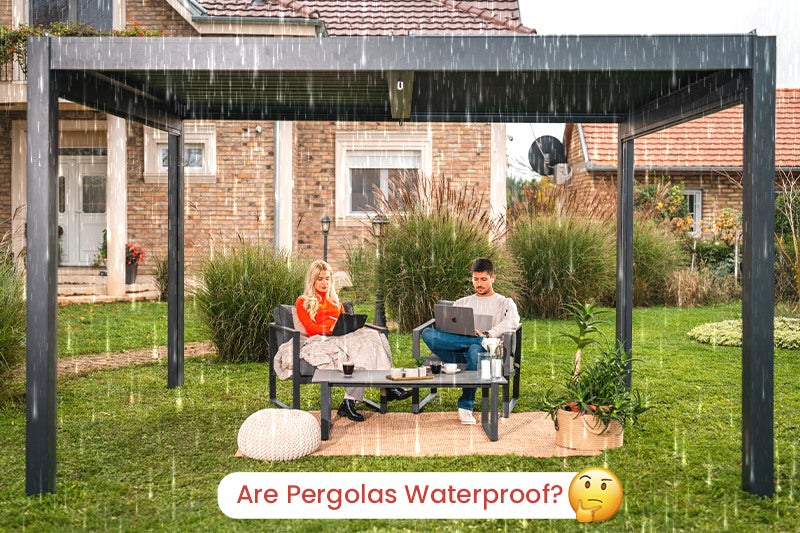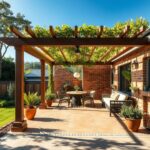What Are the Cons of a Pergola? Key Drawbacks You Should Consider Before Installing

When considering outdoor improvements, a pergola can be an alluring addition, providing a stylish and functional outdoor living space. However, before moving forward with this installation, it's essential to weigh the potential downsides. While pergolas can enhance your backyard aesthetic and create a shaded retreat, they also come with specific drawbacks that can impact your decision. From maintenance challenges to issues with weather protection, understanding these cons is crucial. This article explores the key disadvantages of installing a pergola, helping homeowners make informed choices that align with their needs and expectations.
What Are the Drawbacks of Installing a Pergola?
While a pergola can enhance the aesthetics of an outdoor space, there are several drawbacks to consider before installation. One of the main concerns is that pergolas do not provide complete shelter from the elements; they offer partial shade but leave areas exposed to rain, snow, and direct sunlight. This can limit their use throughout the year and necessitate additional coverings or structures during extreme weather conditions. Additionally, depending on the materials used, a pergola may require regular maintenance to prevent rot, rust, or weather damage. Cost can also be a factor, as they can be expensive to build and may not increase the property’s value significantly. Lastly, local regulations may impose restrictions on size and design, further complicating the decision to invest in a pergola.
Limited Weather Protection
One significant disadvantage of a pergola is its limited ability to protect from harsh weather conditions. Unlike fully enclosed structures, pergolas only offer partial cover, making it difficult to enjoy outdoor spaces during rain or extreme heat. This lack of protection means that furniture and other outdoor items can still be exposed to the elements, potentially leading to damage over time. Homeowners may find that they need to invest in additional coverings, like canvas or retractable awnings, adding to the overall cost and complexity of the installation.
Maintenance Requirements
Another con of pergolas is the ongoing maintenance they often require. Depending on the materials used for construction, such as wood, metal, or vinyl, the upkeep can vary significantly. For instance, wooden pergolas may need staining or sealing to protect against decay and insect infestations, while metal structures may require rust-proofing. Regular maintenance can become a time-consuming task, detracting from the enjoyment of the outdoor space and potentially incurring additional costs over time.
Cost Considerations
Cost is a crucial factor when considering a pergola. The initial investment can be substantial, with expenses ranging widely based on size, materials, and design complexity. While some might opt for DIY projects to save money, the results may not match those of professionally built structures. In addition, if potential buyers do not see a significant increase in property value, homeowners may question the overall worth of their investment. Thus, careful budgeting and planning are vital to avoid unexpected financial burden.
Regulatory Restrictions
Before installing a pergola, homeowners should consider potential local regulations or zoning laws. Many areas have restrictions regarding the size and design of outdoor structures, which could limit the effectiveness and aesthetic appeal of a pergola. Homeowners might be required to obtain permits, which can add to the overall expense and delay project timelines. Failing to comply with these regulations can also result in fines or the need to dismantle the constructed pergola, creating additional hassle.
Impact on Property Layout
The design of a pergola can significantly impact the layout of the surrounding property. Depending on its size and placement, a pergola can obstruct views, block sunlight for other plants, or limit the usable space in a yard or garden. Homeowners may find it challenging to integrate the pergola seamlessly with other outdoor elements, such as patios or landscaping features. Consequently, careful planning is necessary to ensure that the pergola complements rather than hinders the overall design of the outdoor area.
| Drawbacks of Pergolas | Description |
|---|---|
| Limited Weather Protection | Partial shelter from elements, exposing areas to rain and sun. |
| Maintenance Requirements | Ongoing upkeep for materials to prevent decay and damage. |
| Cost Considerations | Substantial initial investment with uncertain return on property value. |
| Regulatory Restrictions | Local laws limiting size and design, requiring permits. |
| Impact on Property Layout | Can obstruct views and affect landscaping or usable space. |
What are the disadvantages of a pergola?

While pergolas can enhance outdoor spaces by providing some shade and a structure for climbing plants, there are several disadvantages to consider when deciding whether to install one. Understanding these can help homeowners make informed choices:
1. Limited Shade
Pergolas provide minimal shading compared to other structures like gazebos or solid roofs. Because of their open design, they allow sunlight to filter through, which might not provide sufficient relief from heat during the summer months.
See also:
- They offer only partial coverage, leaving certain areas exposed.
- Sunlight can still reach occupants, making the space uncomfortable during peak sunlight hours.
- Additional shading solutions, such as fabrics or plants, may be necessary to enhance shade.
2. Maintenance Requirements
Maintaining a pergola can be labor-intensive, especially if it is made from wood. Exposure to the elements can lead to issues over time such as rotting, warping, or fading paint.
- Regular cleaning is required to prevent mold and mildew.
- Wooden structures may need periodic staining or sealing to protect against moisture.
- Metal pergolas can rust if not properly coated, leading to structural issues.
3. Structural Limitations
Pergolas are often less stable than fully enclosed structures. Their light frame means they can struggle against extreme weather conditions, such as heavy winds or snow load.
- They may not be suitable in areas prone to strong storms or hurricanes.
- In heavy snowfall, there is a risk of collapse without proper reinforcement.
- Anchoring must be done correctly to prevent shifting or tipping during high winds.
4. Cost of Installation
While some may view pergolas as a cost-effective solution, the overall price can be higher than anticipated when factoring in components such as footings, anchoring, and other necessary accessories.
- High-quality materials can significantly increase the cost.
- Labor costs for professional installation may add to the total expense.
- Additional features like lighting or climbing plants can also contribute to higher costs.
5. Not Weatherproof
One of the main drawbacks of a pergola is its inability to provide complete protection from rain or harsh weather. This can limit the usability of the space, especially during inclement weather.
- Intermittent rain can disrupt outdoor activities, making them less enjoyable.
- Furniture and equipment underneath may suffer from exposure to the elements.
- Homeowners may need to invest in temporary weather protection solutions.
What happens when it rains on a pergola?

When it rains on a pergola, several factors come into play, which can affect both the structure of the pergola and the area around it. A pergola is generally an outdoor structure providing partial shelter and can be made from various materials such as wood, metal, or vinyl. When rain occurs, the following aspects should be considered:
Impact on Structure
Rain can lead to moisture accumulation on the pergola, which may have short and long-term effects depending on the material used.
- Wood Pergolas: If not treated properly, wood may rot over time due to constant exposure to moisture.
- Metal Pergolas: Depending on the metal used, it can rust if it's not properly coated or maintained.
- Vinyl Pergolas: Generally more resistant to water damage, but heavy rain can still lead to structural weakness.
Water Drainage Considerations
Proper drainage is crucial when it rains on a pergola to manage water flow effectively and prevent pooling.
- Slope Design: A well-designed pergola should have a slight slope to allow rainwater to run off efficiently.
- Drainage Systems: Adding a gutter system can help redirect water away from the structure and prevent water damage.
- Surface Material: The ground beneath the pergola should be able to absorb water or be designed to facilitate drainage.
Effects on the Surrounding Environment
Rain can create an impact not only on the pergola itself but also on the space around it.
- Ground Saturation: The area beneath the pergola may become waterlogged, affecting any plant life.
- Mud and Slipping Hazards: Running water can create muddy spots, posing risks for slips and falls.
- Vegetation Growth: Depending on the flora in the area, heavy rainfall may promote unwanted plant growth.
Usage Considerations During Rain
Rain can influence how and when the pergola is utilized.
See also:
- Comfort and Enjoyment: A pergola offers partial shelter, allowing people to remain somewhat dry, but heavy rain may still limit usage.
- Outdoor Activities: Rainy weather can disrupt plans for gatherings or outdoor activities under the pergola.
- Timing for Maintenance: Rain can indicate the need for more frequent maintenance checks and repairs.
Precipitation-Resistant Features
To enhance functionality, many pergola owners consider adding precipitation-resistant features.
- Canopies or Covers: Installing a retractable canopy can provide full protection from rain when needed.
- Transparent Roofing: Materials such as polycarbonate can offer shelter while still allowing natural light.
- Integrated Planters and Drains: These features promote better water management and utilize excess rainwater beneficially.
What's the point of a pergola without a roof?

A pergola, typically an outdoor structure with an open framework, serves various purposes even without a roof. Essentially, it acts as a transitional space that enhances outdoor living, providing an aesthetic appeal while fostering a connection with nature. It can serve as an invitation to engage with the outdoors, creating a serene atmosphere for gatherings, relaxation, or even as a functional space for outdoor activities.
1. Definition and Design of a Pergola
A pergola is defined as a garden feature forming a shaded walkway, passageway, or sitting area. While it lacks a roof, its design is intentionally open, made up of vertical posts and cross-beams, allowing for flexibility in its use. This design can encompass various styles and materials, enhancing the visual appeal of any landscape.
- Materials: Commonly made from wood, metal, or vinyl, each material adds different aesthetic qualities.
- Style Variations: Options range from classic to modern, providing versatility for different tastes.
- Customization: They can be customized with climbing plants or drapes for added beauty and shade.
2. Aesthetic Appeal and Landscape Integration
Without a roof, a pergola serves to enhance the outdoor experience by integrating architectural elements into the landscape. It provides a focal point that enhances garden design, creating an inviting space that highlights surrounding flora.
- Visual Interest: It draws the eye and can be a statement piece in any outdoor area.
- Frame for Nature: It can frame views of gardens or natural landscapes, creating picturesque backdrops.
- Enhancement: It can be adorned with hanging plants, making it more visually appealing.
3. Space for Outdoor Activities
Even without a roof, pergolas can function as versatile spaces for various outdoor activities. They can be used for dining, hosting gatherings, or simply as a place to relax and enjoy the fresh air.
- Dining Areas: Arrange furniture beneath the pergola for alfresco dining experiences.
- Social Gatherings: A great area for hosting friends and family while enjoying the outdoors.
- Relaxation: They can be a cozy nook with comfortable seating, ideal for reading or unwinding.
4. Support for Plants and Climbing Flora
A key feature of a pergola is its support for climbing plants and vines, which can enhance the space visually and provide natural shade over time. This benefit fosters an environment for biodiversity and improves air quality.
- Vertical Gardening: It allows the cultivation of various climbing plants, adding greenery.
- Shade and Cooling: Over time, plants can provide natural shade, lowering temperatures underneath.
- Wildlife Attraction: It invites butterflies and birds, enriching the outdoor ecosystem.
5. Versatility in Design and Use
The versatility of a pergola without a roof is one of its most significant advantages. It can be adapted for various uses, making it a practical and appealing addition to any outdoor space.
- Multi-Functional Spaces: It can serve as a dining area, an outdoor living room, or a space for yoga or meditation.
- Event Hosting: Perfect for outdoor parties or weddings by simply arranging furniture and decorations.
- Retreat Area: Can be a personal sanctuary designed for quiet reflection or reading.
Questions from Our Readers
What are the maintenance requirements for a pergola?
The maintenance of a pergola can vary depending on the material used. Wooden pergolas may require regular painting or staining to protect against weathering, while metal or vinyl options might need less frequent upkeep. However, all types benefit from periodic checks for structural integrity and any signs of wear or damage.
Do pergolas provide adequate shade?
While pergolas add aesthetic value and can offer some shade, they typically do not provide complete cover from the sun. The amount of shade they offer depends on the design, such as whether slats are added or if climbing plants are grown, which can enhance their shade capabilities.
See also:
Are pergolas worth the investment?
Investing in a pergola can enhance the appearance of your outdoor space, but whether it's worth it depends on your budget and needs. They can increase property value and provide a lovely area for entertaining, yet the cost may not always align with the expected return, especially if not used regularly.
Can pergolas withstand harsh weather conditions?
The durability of a pergola in harsh weather largely depends on the material and construction quality. Well-built wooden or metal pergolas can withstand strong winds and rain, but without proper care and maintenance, they may be vulnerable to damage from severe conditions, making it essential to consider the local climate when building one.

If you want to read more articles like What Are the Cons of a Pergola? Key Drawbacks You Should Consider Before Installing, we recommend you check out our Pergola category.
Leave a Reply
Related Articles